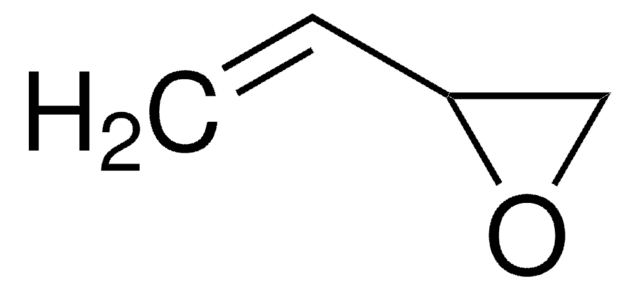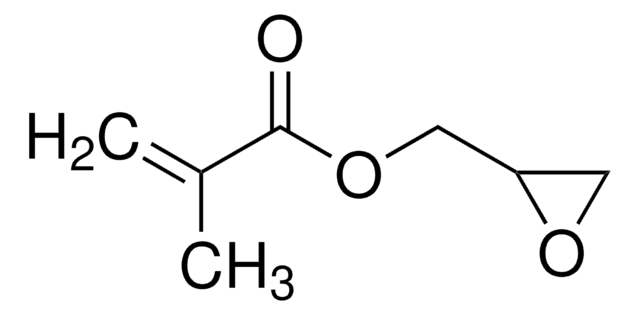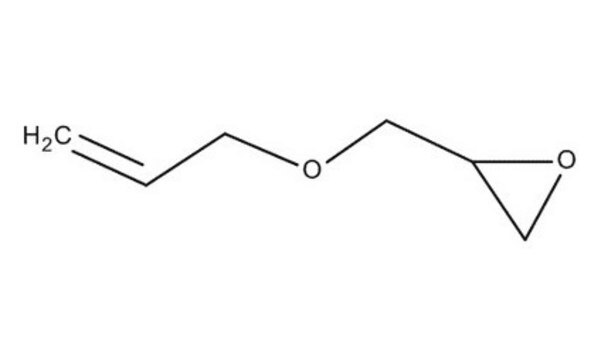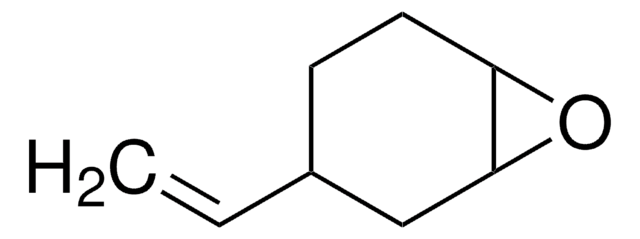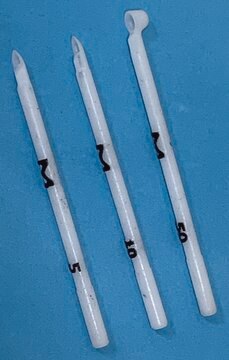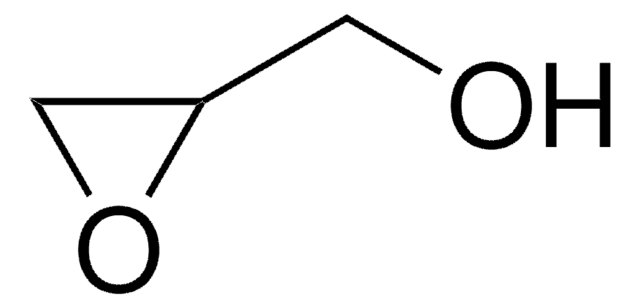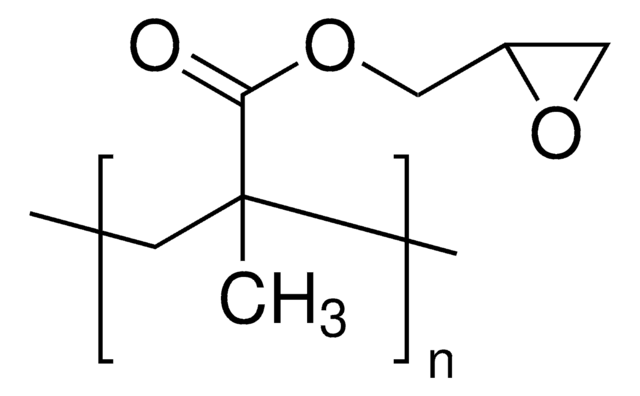A32608
Allylglycidylether
≥99%
Synonym(e):
1-Allyloxy-2,3-epoxypropan, Allyl-2,3-epoxypropylether
About This Item
Empfohlene Produkte
Dampfdichte
3.9 (vs air)
Qualitätsniveau
Dampfdruck
4.7 mmHg ( 25 °C)
Assay
≥99%
Form
liquid
Brechungsindex
n20/D 1.433 (lit.)
bp
154 °C (lit.)
Dichte
0.962 g/mL at 25 °C (lit.)
SMILES String
C=CCOCC1OC1
InChI
1S/C6H10O2/c1-2-3-7-4-6-5-8-6/h2,6H,1,3-5H2
InChIKey
LSWYGACWGAICNM-UHFFFAOYSA-N
Suchen Sie nach ähnlichen Produkten? Aufrufen Leitfaden zum Produktvergleich
Verwandte Kategorien
Allgemeine Beschreibung
Anwendung
Signalwort
Danger
Gefahreneinstufungen
Acute Tox. 3 Inhalation - Acute Tox. 4 Oral - Aquatic Chronic 3 - Carc. 2 - Eye Dam. 1 - Flam. Liq. 3 - Muta. 2 - Repr. 2 - Skin Irrit. 2 - Skin Sens. 1 - STOT SE 3
Zielorgane
Respiratory system
WGK
WGK 3
Flammpunkt (°F)
134.6 °F
Flammpunkt (°C)
57 °C
Persönliche Schutzausrüstung
Eyeshields, Faceshields, Gloves, type ABEK (EN14387) respirator filter
Analysenzertifikate (COA)
Suchen Sie nach Analysenzertifikate (COA), indem Sie die Lot-/Chargennummer des Produkts eingeben. Lot- und Chargennummern sind auf dem Produktetikett hinter den Wörtern ‘Lot’ oder ‘Batch’ (Lot oder Charge) zu finden.
Besitzen Sie dieses Produkt bereits?
In der Dokumentenbibliothek finden Sie die Dokumentation zu den Produkten, die Sie kürzlich erworben haben.
Kunden haben sich ebenfalls angesehen
Artikel
Discussion of synthetic modifications to gelatin, improving the three-dimensional (3D) print resolution, and resulting material properties.
Unser Team von Wissenschaftlern verfügt über Erfahrung in allen Forschungsbereichen einschließlich Life Science, Materialwissenschaften, chemischer Synthese, Chromatographie, Analytik und vielen mehr..
Setzen Sie sich mit dem technischen Dienst in Verbindung.